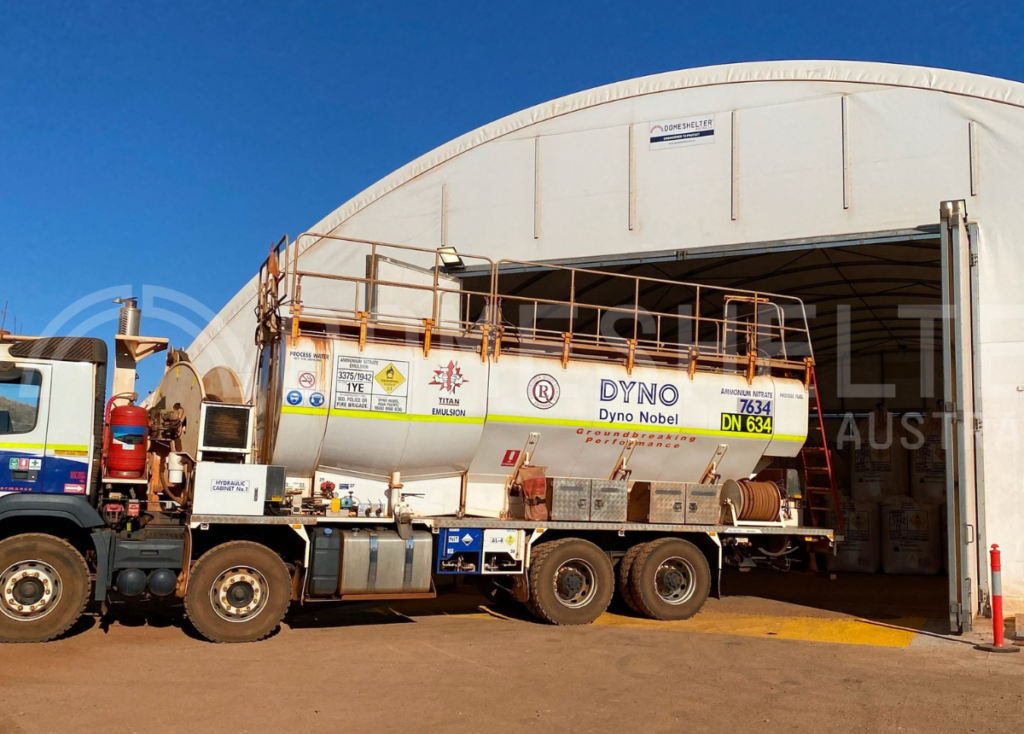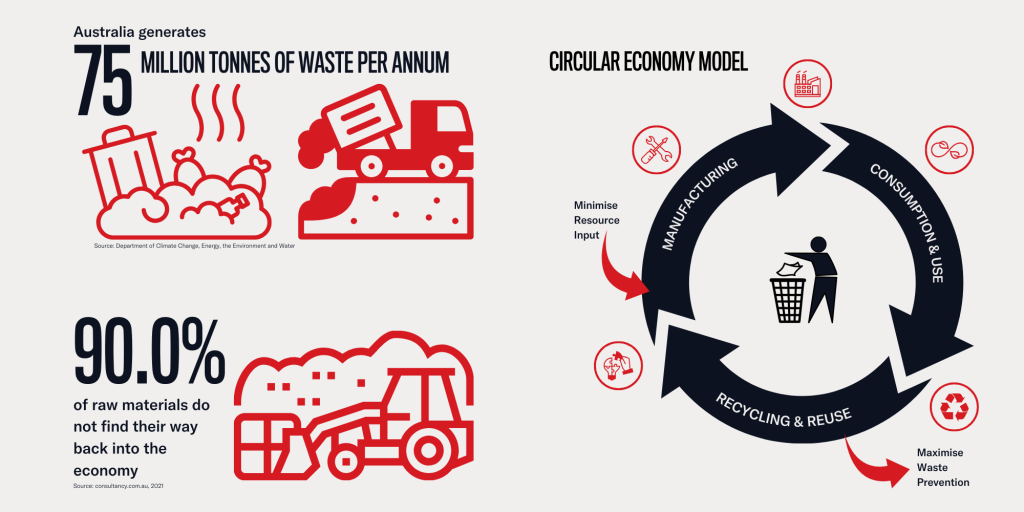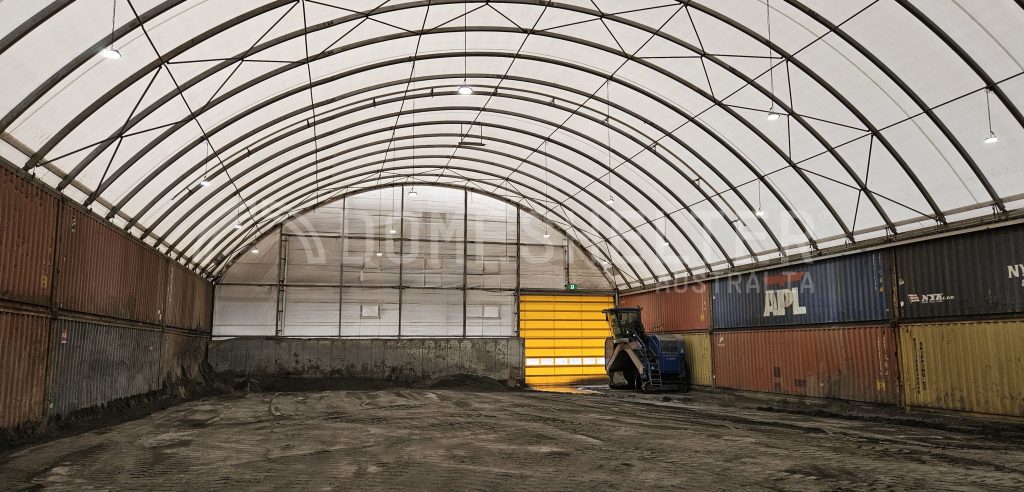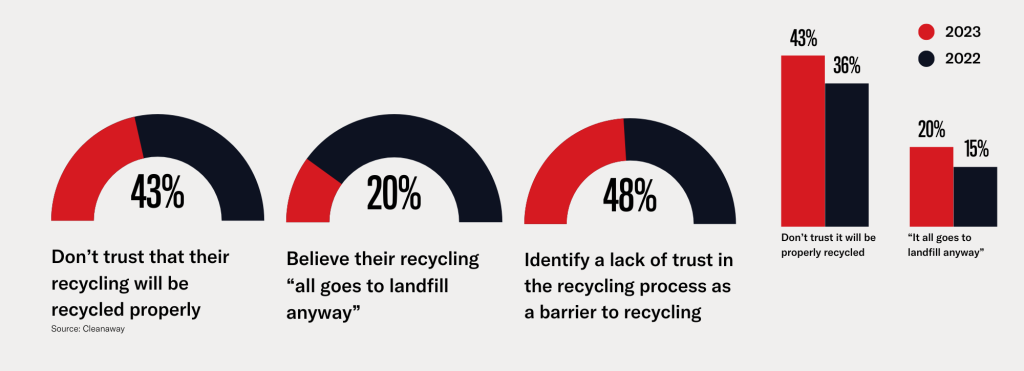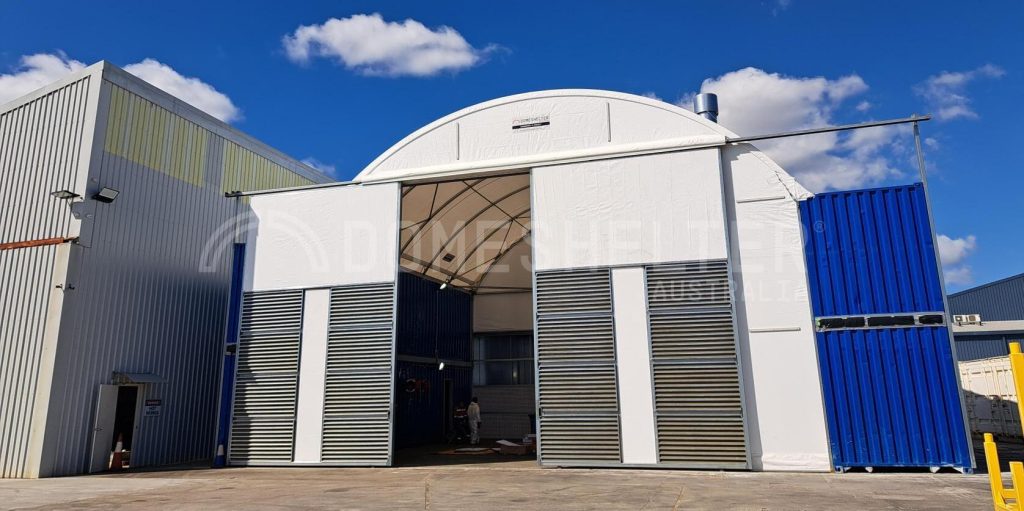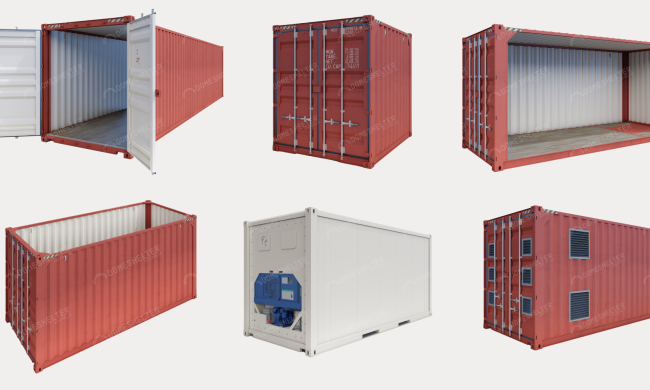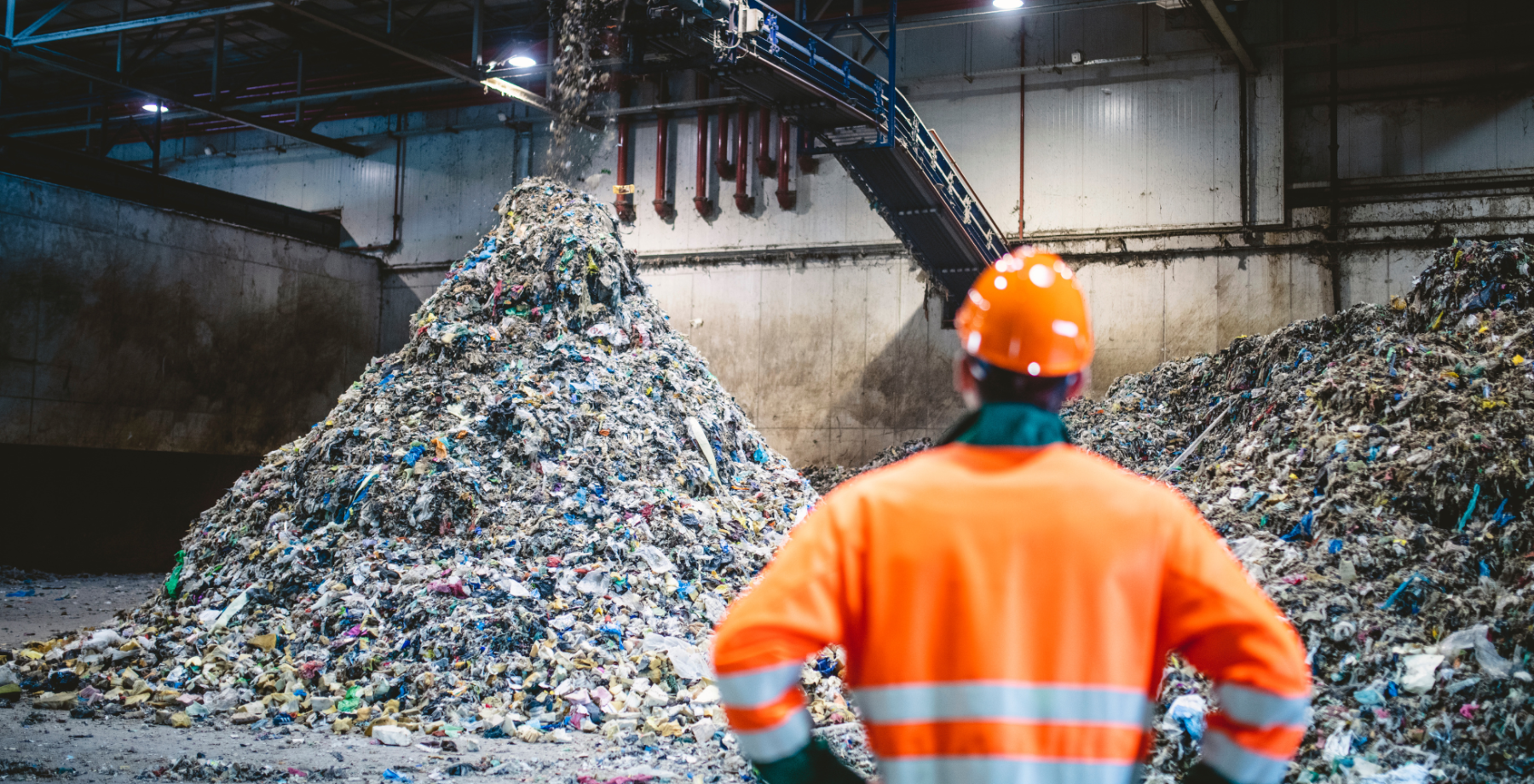
The waste management industry is one of the most critical elements of modern societies all over the world. Proper waste management ensures that waste is disposed of appropriately, in a way that minimises its effects on both human health and the environment.
An inadequate waste management industry can result in littering, unlawful dumping, and environmental pollution, all of which significantly affect the ecosystem. In the long run, these also lead to the degradation of soil, pollution of water and air, and public health challenges.
The Global Importance of Waste Management
By 2025, the World Bank projects that 2.2 billion tonnes of solid waste will have been produced worldwide. Therefore, appropriate waste management is more essential than ever for the health and safety of communities across the globe.
With the ever-increasing volume of waste being generated, along with several other complications, the waste management industry is facing a period of increasing challenges, including a lack of funds, infrastructure, and public awareness. Being such a critical industry, innovative, sustainable, and adaptable systems need to be implemented to safeguard waste management companies against these challenges.
Waste Industry Challenges
1. Ineffective Recycling or Composting
Insufficient infrastructure and limited access to recycling or composting facilities can result in a substantial increase in landfill waste that could otherwise be recycled or composted. This not only strains available landfill space but also contributes to environmental degradation. Insufficient recycling efforts, through unsuitable infrastructure and/or lack of education, can also lead to recyclables being contaminated and typically discarded, further exacerbating the problem and ruining materials that would’ve otherwise been prevented from ending up in landfill.
Addressing these challenges requires substantial investment in better recycling and composting infrastructure, including the development of collection systems and processing facilities. Companies ensuring they have sufficient infrastructure to keep recyclables separated, as well as protected from the weather or other potential contaminants, can help optimise recycling activities. Large, purpose-built facilities such as Fabric Shelters can help achieve this. Governments and regulatory bodies can play a crucial role by strengthening waste management policies, by implementing waste diversion targets, extended producer responsibility programs, and enforcing strict penalties for non-compliance to incentivise responsible waste disposal. Educating the public about recycling and composting also significantly reduces contamination.
Download Our Waste Industry Challenges eBook
2. Understanding and Meeting Regulations
Inconsistent waste management policies and practices across different states or countries can pose a significant challenge, especially for companies operating in multiple regions. These disparities create confusion for businesses striving to manage their waste responsibly. The lack of standardised definitions for recyclable and compostable materials, along with unclear national waste management policies, can further exacerbate the problem. This inconsistency hinders efficient waste management practices and complicates the efforts of environmentally-conscious companies.
The establishment of standardised definitions for recyclable and compostable materials, coupled with clear national waste management policies, would provide businesses with much-needed clarity and guidance, streamlining their efforts and reducing confusion. By continuously monitoring and adapting to evolving regulations, waste management companies can ensure they remain in compliance with waste disposal, recycling, and environmental protection regulations.
3. Rising Operational Costs
Waste management firms are grappling with rising expenses tied to waste collection, transportation, and treatment. Factors such as higher fuel prices and increasing labour costs are driving up financial burdens. These can strain budgets, potentially leading to lower profits and service quality. Moreover, they may make waste services less affordable for both residential and commercial customers, resulting in dissatisfaction and decreased customer loyalty.
To address these escalating expenses, waste management companies can adopt various strategies. These may include investing in advanced route optimisation software and technology to streamline collection routes, cutting travel distances, reducing fuel use, and improving collection fleet efficiency. Regular vehicle maintenance and upgrades can boost fuel efficiency and extend fleet life, leading to long-term cost savings. To offset rising operational costs, waste management firms may also explore diversification of income sources. This could mean investing in a purpose-built recyclables processing facility, collaborating with municipalities or businesses to offer services such as hazardous waste disposal, or other additional income streams.
4. Transitioning to a “Circular Economy”
The Australian government, among many others around the world, is putting increased emphasis on establishing a circular economy (in which materials circulate for as long as possible through repair and reuse, without entering the environment through disposal), to reduce the amount of waste being generated and improve environmental stewardship. The Australian government has put forward an ambitious goal to “meet or beat 80% recovery rate of our waste by 2030”. This may be challenging for existing waste management companies, who need to adapt to a changing landscape; this adaptation may affect their financial stability and operational efficiency. One key impact is the reduced volume of traditional waste, through initiatives and regulations such as the ban on single-use plastics introduced by most states and territories. This can strain waste management companies’ revenue streams and necessitates the exploration of new services and revenue sources. Furthermore, the complex process of sorting and processing materials within a circular economy presents operational challenges, demanding substantial investments in advanced technology and equipment to effectively address these issues.
In Australia, grants and government support is available for waste management companies, in an effort to foster this evolution. This funding, such as the Recycling Modernisation Fund and the $26 million National Product Stewardship Investment Fund, is aimed at investing in new and upgraded infrastructure to improve Australia’s recycling capabilities. Waste management companies should embrace new services and technologies, taking advantage of these funding opportunities to help evolve their service offerings. By adapting to the changing waste landscape and offering a broader range of services, waste management companies can continue to thrive in a circular economy.
5. Lack of Education
A lack of understanding among the general public about proper disposal practices is a considerable challenge for waste management companies throughout the industry. When the public lacks sufficient education about recycling practices, there is a heightened risk of contamination as people place non-recyclable items or contaminated materials into recycling bins. The average recycling contamination rate is 25%, or 1 in 4 items. This contamination not only reduces the quality of recyclables but also escalates processing costs and makes it harder to meet recycling targets. Improper disposal of hazardous waste compounds the problem, as inadequate awareness can lead to hazardous materials being disposed of in regular rubbish or drainage systems, endangering the environment and public health while necessitating expensive clean-up efforts.
To mitigate these challenges, waste management companies can take proactive measures. Collaborating with local governments, environmental organisations, and educational institutions, they can initiate public awareness campaigns. These campaigns should prioritise educating the public on proper waste disposal practices, including recycling and safe disposal of hazardous waste. Through several communication channels, such as social media, educational workshops, and print media, vital information can be spread to a wide audience. Additionally, making recycling and hazardous waste disposal more accessible and convenient is crucial. Collaborative efforts with retailers to promote responsible disposal practices and offering collection points for items like batteries and electronics can further enhance public engagement in sustainable waste management.
Download Our Waste Industry Challenges eBook
6. Lack of Skilled Workers
Workforce shortages are an increasing issue affecting a number of industries, with potentially serious implications. The challenges posed by a lack of skilled workers in the waste management industry are multifaceted. Operational inefficiencies can be a significant issue, as skilled workers are essential for various critical tasks, including the operation of machinery and equipment maintenance. When skilled workers are in short supply, inefficiencies can lead to increased operational costs, longer collection times, and reduced overall productivity. Furthermore, the failure to adapt to technological advances can be a detrimental consequence of the skills gap. The waste management industry is rapidly evolving, with the introduction of advancements such as waste sorting robots and new recycling technologies. Without skilled workers who can operate and maintain these technologies, waste management companies may miss opportunities for improvements and cost savings.
To address these challenges, companies can implement mitigation strategies. One crucial approach is to invest in workforce development programs that target the shortage of skilled workers. These programs can include the provision of training and certification opportunities for equipment operators, mechanics, and drivers. Additionally, companies can harness technology for training purposes, bridging the skills gap more effectively. Developing interactive training modules and e-learning platforms can make training accessible and engaging, benefiting both new and existing employees in acquiring the necessary skills for efficient waste management operations.
7. Unsuitable Collection and Disposal Infrastructure
Limited or inadequate waste management infrastructure – from collection vehicles to recycling facilities and landfill sites – has considerable implications not just within the industry, but for wider society. Lacking the right infrastructure to carry out operations, waste management companies may face reduced efficiencies and therefore increased operating costs; limited ability for service expansion; compliance challenges; or issues safeguarding the health and safety of employees. Perhaps more concerningly, social problems, including littering and illegal dumping, often arise in areas lacking proper waste infrastructure. Environmental deterioration and pollution are another outcome, with inadequate infrastructure allowing waste to accumulate and contaminate surroundings, impacting ecosystems and water sources. Additionally, poor waste management infrastructure poses public health threats, as it increases the risks of disease outbreaks by attracting pests and providing breeding grounds for pathogens.
Waste management companies can employ several mitigation strategies to address infrastructure concerns. Companies looking to expand their capabilities or enhance efficiencies should look towards improving their infrastructure. In Australia, public-private partnerships and/or funding opportunities aimed at infrastructure development are a possibility that should be explored. With increasing costs associated with traditional construction, and industrial rent hikes, alternative infrastructure that is cost-effective, quick to install and fit-for-purpose, should be explored. Fabric Shelters are well suited for the needs of the waste management industry, and can be integrated into project scopes to suit the funding requirements of government initiatives such as the Recycling Modernisation Fund.
8. Increasing Volumes of Waste
Global waste volumes are predicted to increase by 70 percent by 2050, according to the World Bank. Ever-Increasing volumes of waste pose significant challenges for waste management companies. One of the primary issues they face is overburdened collection and disposal systems. As populations continue to grow, and consumption habits increase, the quantity of waste generated can overwhelm existing infrastructure. This results in longer collection times for waste, overfilled landfills, and facilities that struggle to keep up with processing demands. Such challenges can disrupt the efficient flow of waste management operations, leading to increased costs and service delays. The environmental implications of large volumes of waste should also not be overlooked.
Increased emphasis on recycling and waste reduction initiatives, through a combined effort of private and public stakeholders, is an important strategy to curb ever-increasing amounts of waste, as well as changing laws and regulations to reduce waste produced by sources such as retail and fast food outlets. Waste management chains must also invest in advanced waste processing technologies like incineration, composting, or anaerobic digestion. By implementing these strategies, the industry can better navigate the complexities of handling expanding waste volumes while minimising environmental harm and promoting sustainable practices.
9. Improving Safety Performance
Improving safety performance is a critical goal for waste management companies, and achieving this is a critical challenge that all companies must face. Waste management operations often include tasks like handling heavy equipment, working at disposal sites, and operating in proximity to traffic. Safeguarding workers, especially in high-traffic areas or during adverse weather conditions, is a top priority, but it can be a complex endeavour. The risks associated with these tasks necessitate comprehensive safety training programs, to make workers more aware of potential risks and enable them to respond effectively, ultimately enhancing worker safety in waste management.
Waste management companies frequently encounter hazardous materials such as chemicals, electronic waste, and medical waste. Ensuring the proper handling, transportation, and disposal of these materials is crucial to prevent accidents, spills, and environmental contamination. Establishing stringent protocols for identifying, labelling, and containing hazardous materials is essential to minimise risks. Separate facilities that are constructed in accordance with strict regulations are crucial when handling hazardous materials and waste; many companies within the mining sector take advantage of Fabric Shelters for hazardous material storage, as these Shelters fulfil the key guidelines involved. Regular audits and inspections can help ensure compliance with safety standards and regulations, providing an effective means to manage hazardous materials safely. Overall, focusing on worker safety and the proper management of hazardous materials is paramount to improving safety performance and reducing risks in waste management operations.
10. Negative Sentiments Towards the Waste Management Industry
Public resistance to the establishment or presence of waste facilities presents a multifaceted challenge for waste management companies. One significant challenge is the prevalence of NIMBY (Not In My Backyard) sentiments, where residents oppose waste-related infrastructure near their homes, leading to delays and complications in facility development. Additionally, environmental concerns, ranging from groundwater contamination to air pollution, heighten negative public sentiments and necessitate comprehensive mitigation strategies. Regulatory hurdles, stemming from public opposition, often result in extended approval processes and create operational delays. Lastly, the financial burden of addressing public concerns and meeting additional regulatory requirements can significantly escalate project costs, potentially straining the financial viability of waste management initiatives.
To address these challenges effectively, waste management companies must adopt a holistic approach. Engaging with the local community through open dialogue, public meetings, surveys, and community advisory committees can foster understanding and collaboration. Conducting rigorous environmental impact assessments (EIAs) and sharing the results transparently can build trust and demonstrate a commitment to safety and environmental responsibility. Public education campaigns play a vital role in disseminating accurate information about safety measures and environmental safeguards, dispelling misconceptions, and garnering support. By combining these mitigation strategies, waste management companies can navigate the complexities of public resistance while promoting responsible waste management practices.
The Path Forward for Australia’s Waste Management Industry
The waste management industry is facing a myriad of challenges in its quest for efficient, sustainable, and responsible waste management. These challenges include ineffective recycling or composting, inconsistencies in regulations, rising operational costs, a lack of education among the general public, a shortage of skilled workers, unsuitable infrastructure, and the need to improve safety performance, among others.
To address these challenges, waste management companies must adopt innovative and adaptable approaches. Investing in advanced technology, workforce development, and infrastructure improvement are crucial steps. Collaboration with governments and regulatory bodies is also vital to establish responsible waste management practices.
Furthermore, public awareness and education initiatives play a pivotal role in reducing contamination, promoting recycling, and ensuring proper hazardous waste disposal. Embracing sustainability and resource recovery is key, especially in the context of a circular economy. By proactively addressing these challenges and implementing effective mitigation strategies, the waste management industry can continue to evolve, thrive, and contribute to a cleaner, more sustainable future for our planet.
DomeShelter Australia manufactures fully-engineered, fit-for-purpose Fabric Shelter Solutions that are uniquely well suited to the Waste Management Industry’s needs. Large size capability, clear-span Structures with translucent roof tarp and easy ventilation suit a range of applications, from recycling sorting facilities to fully-enclosed loose waste storage.
To see for yourself, try our free 3D Design Tool, or get in touch directly to speak to a DomeShelter™ expert.




